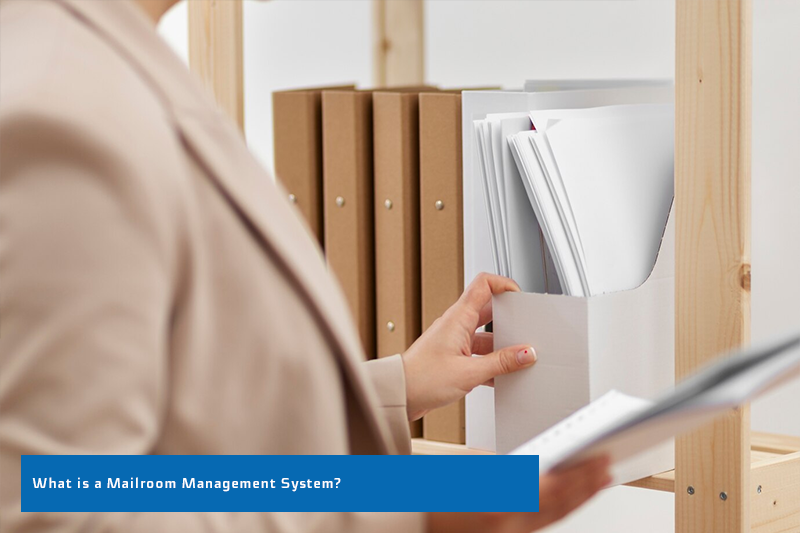A mailroom management system is a comprehensive solution designed to optimize the handling of mail, from receipt to delivery. By automating tasks such as sorting, tracking, and processing, these systems enhance efficiency, reduce errors, and improve overall productivity. In an era where time is of the essence, investing in a modern mailroom management system is not just about managing mail—it’s about empowering businesses to stay ahead of the curve and focus on what matters most: growth and success.

Understanding Mailroom Management
Mailroom management is the systematic handling and processing of incoming and outgoing mail within an organization. Efficient mail handling is vital for businesses of all sizes as it ensures timely communication, enhances customer service, and facilitates smooth workflow. However, traditional mailroom setups often face challenges such as manual sorting, delays in delivery, and a lack of tracking mechanisms.
In today’s digital age, where speed and accuracy are paramount, these challenges can impede productivity and hinder business growth. Therefore, understanding the nuances of mailroom management is crucial for businesses seeking to optimize their operations. By embracing modern solutions like mailroom management systems, businesses can overcome these challenges and unlock the full potential of their mail handling processes.
Optimize mail handling with Mailroom Management Systems
Definition: A mailroom management system is specialized software designed to streamline the handling of incoming and outgoing mail within an organization. It provides a centralized platform for managing various mail-related tasks efficiently.
Functions and Features: These systems offer a range of functions and features, including automated sorting, tracking, scanning, and delivery management. Advanced systems may include OCR (optical character recognition) capabilities for automated data extraction, integration with digital mailrooms, and real-time notifications for improved visibility.
Importance of Automation: Automation is pivotal in modern mailroom systems, enabling tasks to be completed swiftly and accurately. By automating routine processes, businesses can enhance efficiency, reduce errors, and free up valuable time for staff to focus on more strategic activities, ultimately boosting productivity and customer satisfaction.
Investing in a mailroom management system is more than just adopting a new tool—it’s embracing a solution that drives efficiency and transforms mail handling processes for the better.
Maximizing efficiency exploring key components of Mailroom Management Systems
Incoming Mail Management:
- Sorting: Automate the sorting process to categorize incoming mail based on predefined criteria such as recipient, department, or urgency.
- Scanning: Digitize incoming mail to streamline document management and facilitate easy access and retrieval.
- Tracking: Implement tracking mechanisms to monitor the movement of incoming mail from receipt to delivery, ensuring accountability and timely processing.
Outgoing Mail Management:
- Printing: Utilize advanced printing capabilities to generate professional-looking documents for outgoing mail.
- Packaging: Streamline packaging processes with automated systems, ensuring accurate and secure packaging for each mail item.
- Shipping: Integrate shipping solutions to efficiently dispatch outgoing mail to recipients, optimizing delivery times and reducing costs.
By leveraging these key components, mailroom management systems empower businesses to enhance mail handling processes, improve efficiency, and deliver superior service to customers.
Unlocking business advantages the benefits of Mailroom Management Systems
Implementing a mailroom management system brings a multitude of advantages to businesses, enhancing various aspects of mail handling processes.
Improved Efficiency and Productivity: Streamlined workflows and automation of repetitive tasks result in faster mail processing, allowing staff to focus on core responsibilities and boosting overall productivity.
Enhanced Security and Compliance: By digitizing mail and implementing secure access controls, businesses can ensure sensitive information remains protected, thereby enhancing security and compliance with regulatory requirements.
Cost Savings Through Automation: Automation of sorting, scanning, and delivery processes reduces manual labor and associated costs, resulting in significant savings for businesses in terms of time and resources.
Better Tracking and Accountability: Real-time tracking mechanisms enable businesses to monitor the movement of mail items, enhancing accountability and providing insights for process improvement.
In conclusion, the implementation of a mailroom management system not only optimizes mail handling processes but also drives efficiency, security, compliance, and cost savings for businesses of all sizes.

